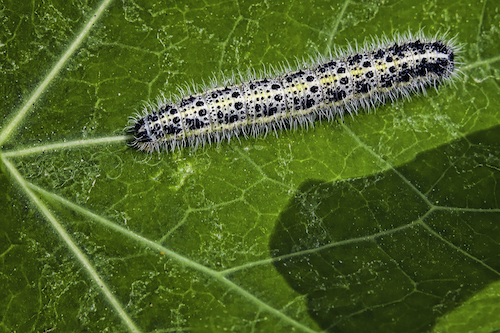Easy Steps to Prevent Plant Diseases and Insect Pests
 Wednesday, February 9, 2022 at 12:13PM
Wednesday, February 9, 2022 at 12:13PM 
Attentiveness to early warning signs. Proper nutrition. A healthy living environment. These sounds like like the core tenets of any health book or fitness magazine. But these wise steps that foster better health in the human body are also the most effective ways of preventing insect pests and diseases in plants.
The old adage that an “ounce of prevention is worth a pound of cure” rings just as true with plants as it does with the human body. Research has proven that healthy plants can far more easily repel attacks from insect pests and diseases than ailing plants, and prevention is the key word here. So read on, and follow these proven steps to help keep your plants thriving, and help you avoid ever having to resort to organic insect pesticide sprays, which can wipe out beneficial insects right along with the pests.
Don’t Overcrowd the Garden
Take care that your garden isn’t over planted. The best way to accomplish this is to closely follow the spacing requirements for each variety you plant. As you plant seedlings, try to picture the plant at mature size, not the tiny seedling in front of you. This can be difficult for new gardeners who see what seems like “too much empty space” around those tiny seedlings. plan for eventual growth, and remember that when a garden is overcrowded, airflow around the plants is restricted, trapping moist, stagnant air that encourages disease and pests.
Ensure Good Drainage
Plant roots can suffocate when water floods the base of the plant during heavy rains. So keep a close eye out for any puddling after rain, and reshape the soil as needed to channel water away and avoid excessively soggy roots.
Note Unusual Growth
Strange spots on leaves and stems, curled leaves, and abnormal and stunted growth patterns are some of the signs of an ailing plant. inspect your garden daily and catch these warning signs early enough to correct a problem before insect pests and disease pounce on the ailing plant and finish it off.
Control Weeds
Weeds aren’t just ugly and annoying, they frequently harbor plant diseases and act as alternative hosts for insect pests. And as they get larger, weeds compete with your plants for soil nutrients, air, water, and sunlight - often winning that battle as many weed varieties grow much faster than edible cultivars. So it’s best not to ever let weeds get established in the first place. While you’re in the garden each day inspecting your plants for signs of unusual growth, go ahead and pull up any weeds you find. Better yet, prevent weeds from growing in the first place by covering the soil surface with organic compost or a similar mulch. Not only does mulching your garden block sunlight to weed seeds, but it helps stabilize the soil temperature - protecting beneficial soil organisms from soaring summer high temperatures and helping prevent water loss from evaporation.








Reader Comments